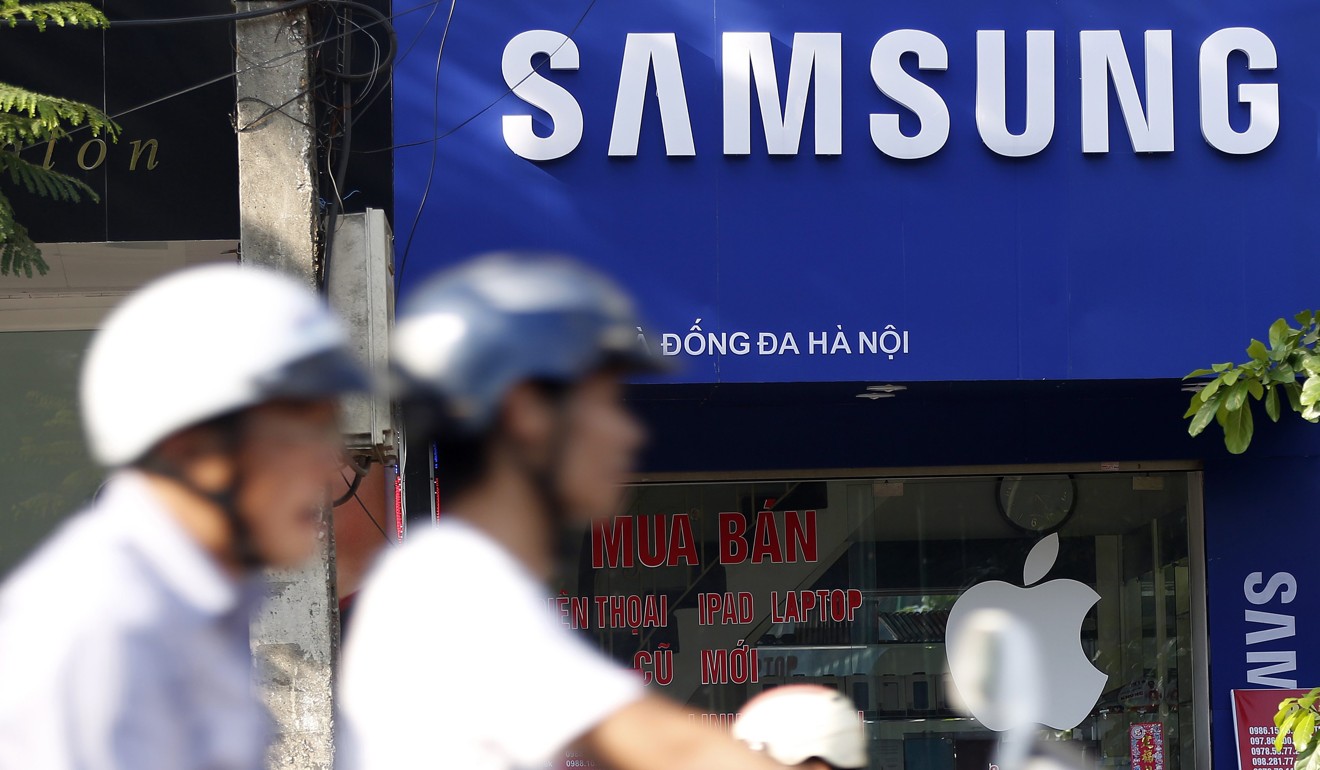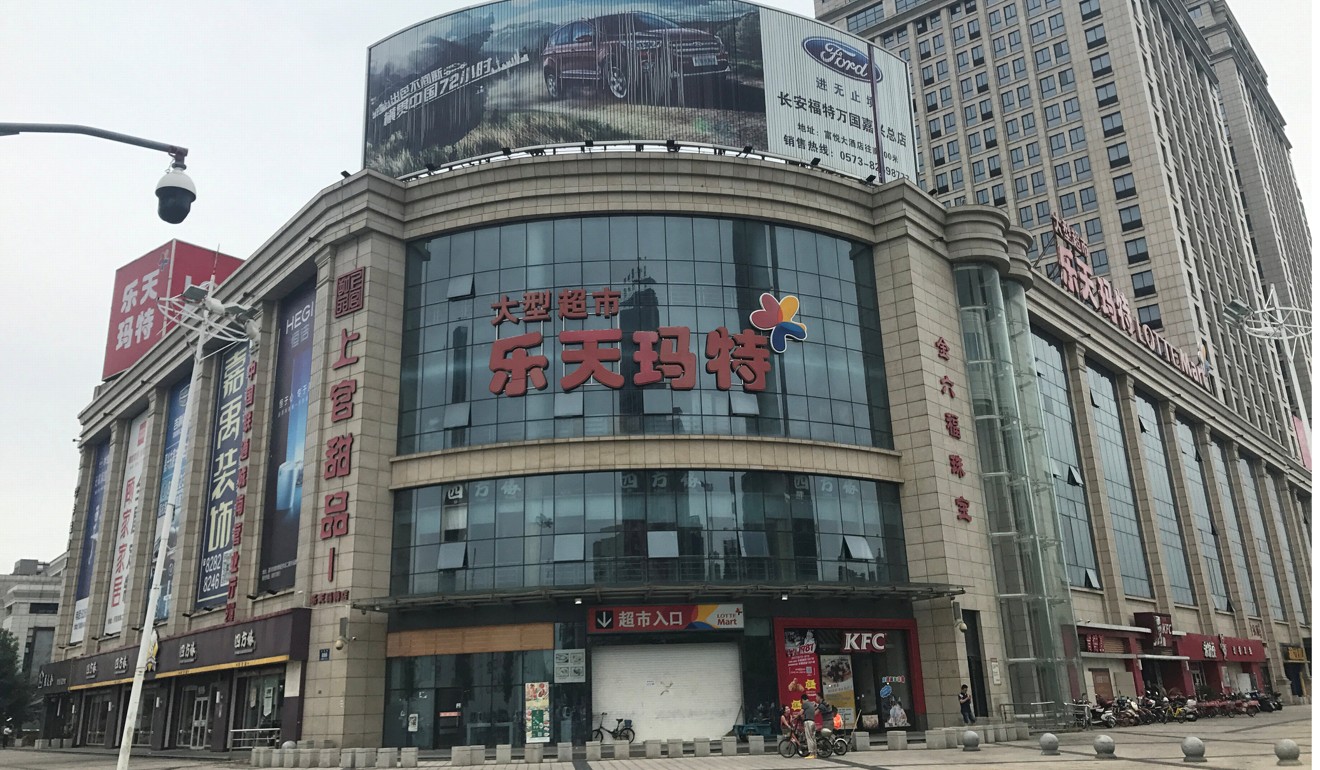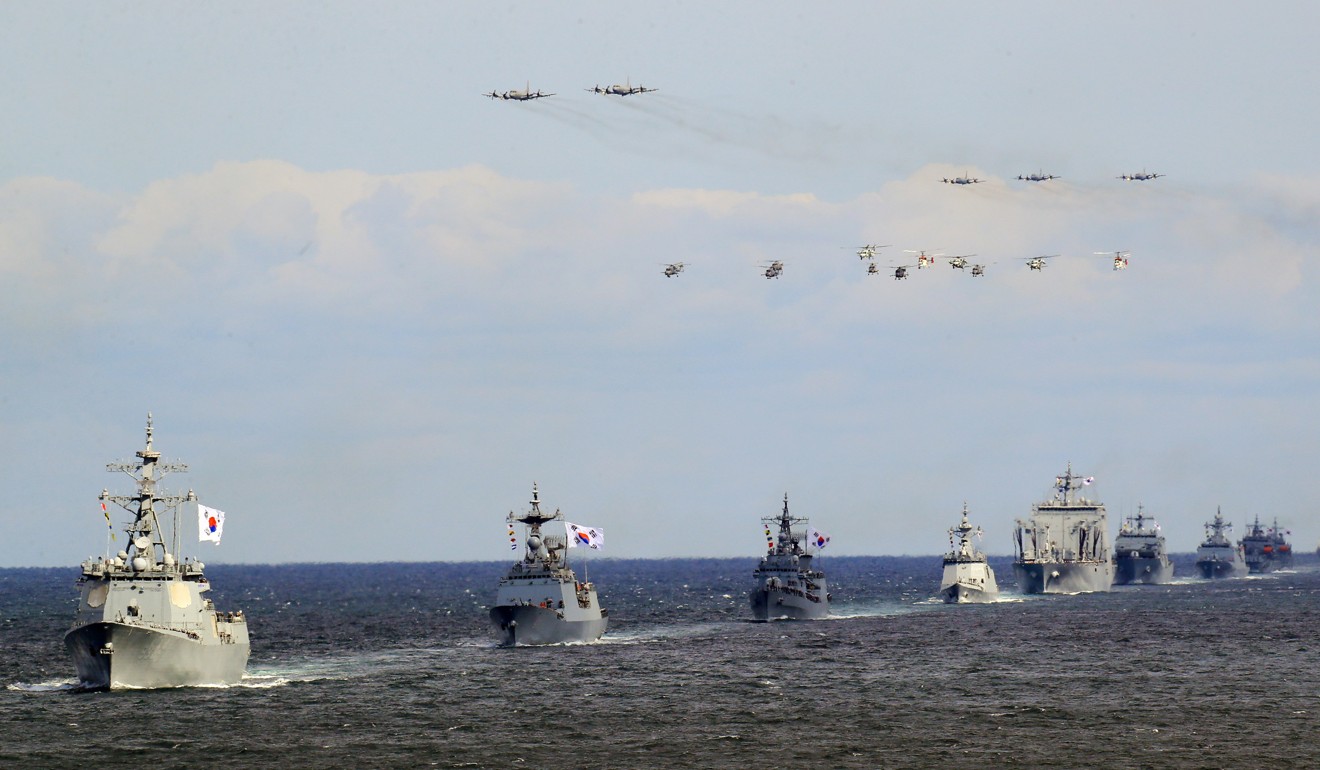
South Korea nimbly dodges crossfire of US-China trade war
- From economic to diplomatic to military fronts, private sector and government both taking steps to avoid being caught in a clash of major powers

It’s an uneasy time for Asian nations as the rivalry between China and the United States intensifies and uncertainty hangs on whether they can resolve their trade war beyond the 90-day truce. In this special series the South China Morning Post explores how the China-US rivalry is affecting four countries in Asia. In part two, Lee Jeong-ho looks at South Korea.
As the confrontation between China and the United States spills over from trade to a wider range of issues challenging their relations, South Korea is taking steps on the economic, diplomatic and military fronts to avoid being caught between the two giants.
South Korea, which relies on the US for its security and on China for its economy, is among the nations that stand to suffer serious collateral damage from the trade war. The clashes of the two heavyweights vying for greater geopolitical interests over the Korean peninsula have sandwiched the “middle power”, with South Korea unable to fully accommodate both the US and China’s demands.
This is not South Korea’s first experience being caught between major powers in a period of transition. Indeed, the peninsula’s location has historically drawn great powers to engage it. Koreans have seen their lands used by major powers as a proxy to achieve geopolitical interests in the first Sino-Japanese war, the Russo-Japanese war and, of course, the Korean war, all of which resulted in millions of casualties and total destruction.
Vowing to learn from history, though, South Korea – both the government and the private sector – is implementing a new strategy to actively hedge the risks.

Economic shelter from the trade storm
The US-China trade collision is accelerating South Korean companies’ plans to exit China and would further lessen their presence in the world’s second-largest economy.
South Korean firms have long considered relocating their production facilities, due to rising wages and political uncertainties in China. Well before the current circumstances, the pace of South Korean manufacturers’ investment in China had already slowed for the past few years due to China’s unfair market practices and increased labour costs, according to a white paper by the Korea Chamber of Commerce in China.
Samsung Electronics, the world’s largest mobile phone maker, closed its China network equipment manufacturing unit in Shenzhen last year, and moved a production base to Vietnam. Samsung is also considering shutting its Tianjin mobile phone production plant by the end of this year, according to South Korean media outlet Electronic Times.
Samsung did not respond to a request for comment.
Still, experts say the US-China trade war has firmed the resolve of South Korean companies to exit China and seek other destinations for their investments.
One beneficiary is Vietnam: South Korean investment there came to US$1.97 billion in the first half of this year, exceeding South Korean investment in China – US$1.60 billion over the same period – for the first time, according to data compiled by the Export-Import Bank of Korea.

The South Korean retail giant, Lotte, is diversifying into Vietnam, planning to build the Lotte Mall Hanoi, a US$600 million multi-purpose shopping centre, by 2020. Construction will include a hotel, flats, offices and a trade-centre complex.
Kim Ill-san, chief representative of the Korea International Trade Association in Vietnam, said the US-China trade war had spurred many South Korean firms to move factories from China and into Vietnam to avoid tariffs slapped by Washington on products made in China.
“The change in the price of raw materials – due to the US-China trade war – is working as a burden for South Korean firms in China, making them shift their production base to Southeast Asia, including Vietnam,” Kim said.
“China’s increased labour costs would also be another reason for the decision. The [monthly] labour cost of manufacturing workers in China, on average, is approaching US$800 per person, while in Southeast Asia it marks about US$250-400.”
Kim Yun-hee, a senior trade commissioner at the Korea Trade-Investment Promotion Agency office in Beijing, said South Korean corporations in China were particularly concerned about the effects of a protracted US-China trade war.
“Increased cost and changes in exchange rates are some of the direct impacts of the US-China [trade] war on the corporations. Meanwhile, the increased uncertainties in the global trading environment are acting as an indirect impact to burden the businesses,” Kim Yun-hee said.
With a revised US-South Korea trade agreement, or KORUS, recently concluded with the Trump administration, South Korean companies might also consider bringing businesses back to their home, observers said.
“Southeast Asia, so far, has largely been spared from Trump’s tariff wrath … [but] Korean companies might also take another look at their own home market now that a revised KORUS agreement is in place. Higher costs aside, producing at home can at least give Korean companies US market access certainty,” Sean King, vice-president of political strategy firm Park Strategies, said.
Diversifying production facilities would also ease some of the huge fallout South Korean firms have faced from the THAAD dispute.
South Korean firms came under great pressure from China after Seoul deployed the US military’s Terminal High Altitude Area Defence system in Seongju county. South Korea says the anti-missile system is necessary to ward off threats from the North while China sees it as a challenge to its defences.
“The real turning point for South Korean companies in mainland China was ... [being] mercilessly targeted by authorities after South Korea deployed THAAD … I think there’s a ‘before and after THAAD’ syndrome for South Korean companies in mainland China,” King said.

Minimising the US-China diplomatic factor
In addition to moving production out of China, South Korea is also trying to ensure its influence over the Korean peninsula.
Aside from the US-China trade war, of course, 2018 has been marked by the rapid thawing of relations with North Korea, with President Moon Jae-in seizing the chance to work with the North Korean leader Kim Jong-un. Seoul has focused on rebuilding its relations with Pyongyang, taking part in three inter-Korean summit meetings since April.
“An inter-Korean joint military committee will be activated shortly to avoid accidental military collision … the two Koreas have agreed to enhance exchanges and cooperation,” the September Pyongyang Declaration stated.
One reason behind Seoul’s peace initiatives was to remove the Korean peninsula as a bargaining chip in the US-China competition.
Park Byeong-seug, a South Korean lawmaker with Moon’s Democratic Party of Korea, said Seoul was trying its best to be an independent actor by improving its standing with North Korea during a transitional period of power relationships.
“It is in Seoul’s best interests to minimise its damage caused by the two countries’ hegemonic rivalry … and the only way to achieve that is by enhancing the relations with Pyongyang to create a new diplomatic space. If we go back to the cold war, there is nothing much Seoul can do as an actor,” Park said.
“US-China relations may further deteriorate beyond trade. A currency war and petroleum war between the two countries may ignite in the worst-case scenario.”
The deterioration of inter-Korean relations will only squeeze Seoul’s diplomatic space amid the intensifying US-China rivalry.
“The Korean peninsula becomes a subordinate factor of US-China relations if inter-Korean relations do not improve. This is why the Moon administration is focusing so much on improving inter-Korean relations … It will give Seoul the power to overcome the structural problem between the US and China to maximise Korean interests,” said Boo Seung-chan, a research fellow at the Yonsei Institute for North Korean Studies in Seoul.

Wading into deeper military waters
South Korea is also building up its own defences amid the uncertainty of the US military commitment on the region.
Seoul announced in October plans to expand its maritime forces into a blue-water navy – capable of operating globally, across oceans – to safeguard its strategic interests against China’s maritime expansion over the South China Sea.
A blue-water navy fleet “will contribute to expand the navy’s operational area into far seas, to secure maritime traffic routes, and ensure the free maritime activities and the safety of our citizens”, the South Korean navy reported to parliament in October, adding that it would also build an air command to support military aircraft and airborne weapon systems.
South Korea’s navy has traditionally been almost exclusively concerned with coastal operations, to maximise its military readiness against North Korea. But as Beijing – which has overlapping exclusive economic zones (EEZ) with Seoul in the Yellow Sea – speeds up its military modernisation, Seoul’s concerns have grown.
The South Korean defence ministry said in September that it would closely monitor China’s installation of buoys in the two countries’ EEZs.
That concern grew sharply last year as US President Donald Trump repeatedly complained that South Korea was relying on the US too much for its security, raising the possibility that the US might weaken its commitments to the region.
Moon Jang-nyeol, a professor at Korea National Defence University, said South Korea would continue to strengthen its naval force.
“South Korea has long pursued having a blue-water navy to build a deterrent capability against the powerful peripheral states … Its decision to improve its naval force capacity is less likely to change, and its spending may continue to increase,” Moon said.
“But the chance of South Korea engaging in international disputes such as the South China Sea is quite low. Its main goal is to balance the power over the region, more than actually engaging in those conflicts.”